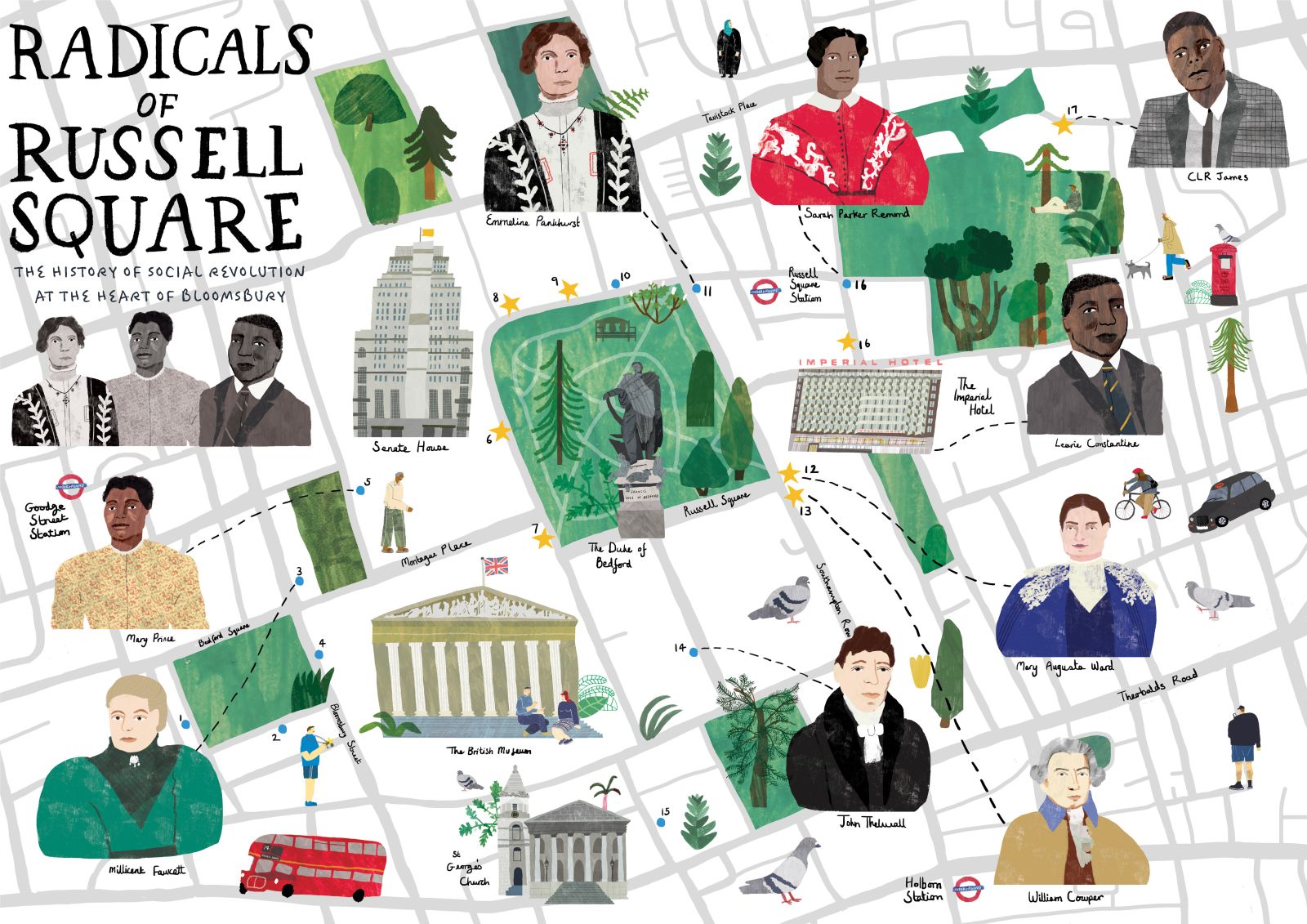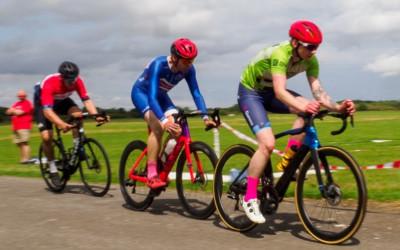Research image of the month - bringing historical narratives to life

This month’s (February 2025) research image of the month is from Dr Philip Seargeant, who specialises in sociolinguistics, with a particular interest in political storytelling. Philip told us all about his research which is having both a physical and a social impact on the world, through beautiful and artistic ‘heritage maps’.
In Philip’s own words…
“I’m thrilled that my image was selected as February’s research image of the month! The image was designed to engage people and draw them in, so hopefully that’s what the panel of judges saw. The image itself is a kind of illustrative ‘cultural map’ that aims to capture the essence of the region's rich heritage. It does this by highlighting the area’s [Bloomsbury] connection to significant political, cultural, and social movements throughout history. It brings historical narratives to life, connecting ideas, people, and places in a way that invites exploration and engagement. We wanted the visual representation to provide an artistic but also accessible informative experience, demonstrating how a varied and interesting heritage can be understood through the streets of a city and the people – and ideas – that lived there.
“One of the unique aspects of this research is its focus on the interplay between place and narrative. Many key ideas and social movements blossomed in Bloomsbury, where people from diverse backgrounds congregated and contributed to the area’s radical past. The research delves into the contrast between the historical dominance of an elite noble family—whose names are still reflected in street names—and the presence of political radicals and social reformers who challenged the establishment – and this isn’t just the case for Bloomsbury but many places all over the UK. This juxtaposition is integral to understanding the heritage of these areas.
“We developed the map as part of a broader research project that aims to explore how heritage narratives are constructed and represented in various places. The project investigates stories often overlooked by traditional heritage markers, such as the blue plaque scheme, which has faced criticism for privileging certain figures while neglecting others. By mapping these hidden narratives, the research seeks to elevate the voices and stories of individuals who have played vital roles in movements such as the abolition of slavery, women's suffrage, and the expansion of education.
“The choice of this image felt relevant to me due to its engaging and accessible design. The illustrator, Emily Kaye, has an artistic style that adds a layer of intrigue, making it more than just a straightforward map, it’s a tool to coney complex social and political histories but in an accessible way to a broader audience.

“The project’s impact is multifaceted. Beyond raising awareness of hidden narratives and the marginalised people or groups that has been overlooked in these narratives, it also offers a different tool – the maps – and experience for present day folks to engage with heritage. The map serves as a cultural artifact that people can physically use to explore the area and connect with its stories. It sheds light on lesser-known aspects of history, linking seemingly unrelated events and ideas.
“My academic background is in sociolinguistics, mainly in political storytelling — how narratives are used to shape public understanding and influence political discourse. This research project naturally evolved from my interest in how narratives of heritage are disputed and constructed. It also aligns with linguistic landscape research, which examines how language is used in public spaces for various purposes, from advertising to commemoration.
“As one of the projects on the University’s Open Societal Challenges (OSC) platform, the research aligns closely with both The Open University’s mission to be open to people, places, and ideas and the OSC aims of addressing key societal issues and delivering impactful research outputs. By making academic research accessible and relevant to the public, it also embodies the institution’s commitment to informal learning and community engagement.
“Being selected as the Research Image of the Month for February is meaningful recognition of the project’s significance. It affirms the value of using visual communication to convey research insights and demonstrates the potential of academic work to engage with and impact the wider world. This acknowledgment inspires further exploration and the development of more maps, each telling unique stories that contribute to our understanding of heritage and identity.”
About Open Societal Challenges
The OU’s Open Societal Challenges programme aims to tackle some of the most important societal challenges of our time through impact-driven research.
The programme’s focus on the themes of Tackling Inequalities, Living Well and Sustainability align well with the OU’s mission to be open to people, places, methods and ideas.
The programme’s aim is to apply excellent research by OU academics to some of the most pressing challenges facing people across the UK and worldwide to transform lives and drive societal change.
Contact our news team
For all out of hours enquiries, please telephone +44 (0)7901 515891
Contact detailsNews & articles

OU study: Transplant athletes match elite performance
A new study led by The Open University’s Professor Bart Rienties, and to be published in Progress in Transplantation in December, reveals that high-intensity transplant athletes can not only meet but greatly exceed existing physical activity guidelines.